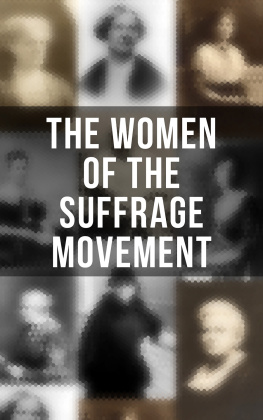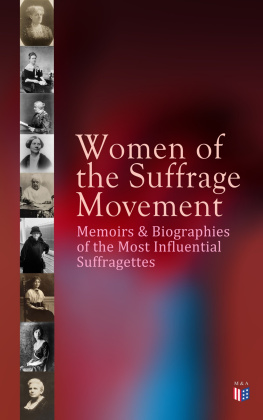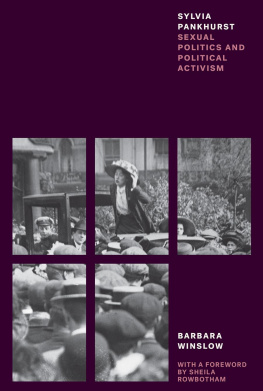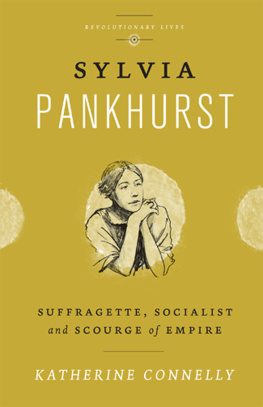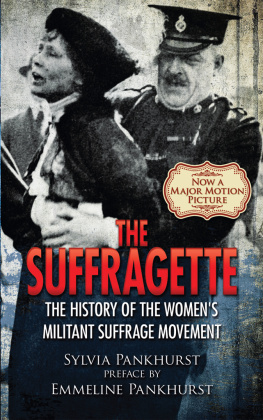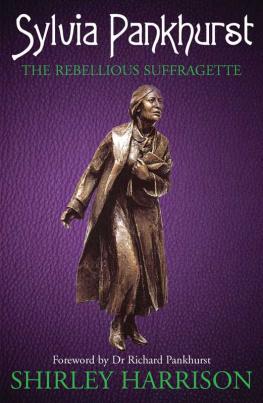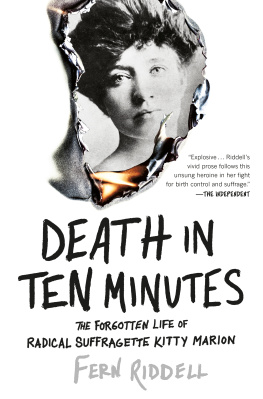THE SUFFRAGETTE
THE HISTORY OF
THE WOMEN'S MILITANT
SUFFRAGE MOVEMENT
1905-1910
By
E. SYLVIA PANKHURST
First published in 1911
This edition published by Read Books Ltd.
Copyright 2019 Read Books Ltd.
This book is copyright and may not be
reproduced or copied in any way without
the express permission of the publisher in writing
British Library Cataloguing-in-Publication Data
A catalogue record for this book is available
from the British Library
"You have made of your Prisons a temple of honour."
W. E. Gladstone
Contents
Illustrations
Sylvia Pankhurst
Christabel Pankhurst and Annie Kenney
First Women's Suffrage Demonstration
Selling and advertising "Votes for Women" in Kingsway
Mrs. Pankhurst
Cartoon from Punch on Mr. Asquith's false promise.
The Head of the Procession to Hyde Park,
A Section of the great "Votes for Women" meeting
Lord Rosebery and other Members of both Houses
Christabel Pankhurst
Mrs. Pankhurst and Christabel
Printed by St. Clements Press, Ltd.,
Reading the Warrant
Mr. Curtis Bennett
Miss Christabel Pankhurst
Mr. Herbert Gladstone
Members of the Women's Freedom League
Mrs. Pankhurst in Prison
Ejection of a woman questioner
The Chelmsford By-Election
The human letters
Procession to welcome Mrs. Pankhurst, Christabel and Mrs. Leigh
Mrs. Pethick Lawrence's release,
The arrest of Miss Dora Marsden,
Elsie Howey
A part of the decoration of the Exhibition
The band out for the first time
Mrs. Lawrence's Release Procession,
Christabel waving to the hunger strikers
The hunger strikers waving to Christabel
Forcible Feeding with the Nasal Tube
Lady Constance Lytton
Arrest of Miss Dora Marsden
Jessie Kenney
"Christabel and Sylvia, as little girls, had cried to be taken to meetings. They had helped in our drawing-room meetings in every way that children can help. As they grew older we used to talk together about the suffrage, and I was sometimes rather frightened by their youthful confidence in the prospect, which they considered certain, of the success of the movement.
There is an old French proverb, "If youth could know; if age could do." It occurred to me that if the older suffrage workers could in some way join hands with the young, unwearied and resourceful suffragists, the movement might wake up to new life and new possibilities. After that I and my daughters together sought a way to bring about that union of young and old which would find new methods, blaze new trails. At length we thought we had found a way."
Emmeline Pankhurst,
My Own Story, 1914
Sylvi a Pankhurst
Designing a part of the
decorations of the Prince's Skating Rink
PREFACE
This history of the Women's Suffrage agitation is written at a time when the question is in the very forefront of British politics. What the immediate future holds for those women who are most actively engaged in fighting for their political freedom no one can foretell, but one thing is certain: complete victory for their cause is not far distant.
When the long struggle for the enfranchisement of women is over, those who read the history of the movement will wonder at the blindness that led the Government of the day to obstinately resist so simple and obvious a measure of justice.
The men and women of the coming time will, I am persuaded, be filled with admiration for the patient work of the early pioneers and the heroic determination and persistence in spite of coercion, repression, misrepresentation, and insult of those who fought the later militant fight.
Perhaps the women born in the happier days that are to come, while rejoicing in the inheritance that we of to-day are preparing for them, may sometimes wish that they could have lived in the heroic days of stress and struggle and have shared with us the joy of battle, the exaltation that comes of sacrifice of self for great objects and the prophetic vision that assures us of the certain triumph of this twentieth-century fight for human emancipation.
E. Pankhurst.
4, Clement's Inn, W. C., London.
January, 1911.
INTRODUCTION
In writing this history of the Militant Women's Suffrage Movement I have endeavoured to give a just and accurate account of its progress and happenings, dealing fully with as many of its incidents as space will permit. I have tried to let my readers look behind the scenes in order that they may understand both the steps by which the movement has grown and the motives and ideas that have animated its promoters.
I believe that women striving for enfranchisement in other lands and reformers of future days may learn with renewed hope and confidence how the "family party," who in 1905 set out determined to make votes for women the dominant issue of the politics of their time, in but six years drew to their standard the great woman's army of to-day.
It is certain that the militant struggle in which this woman's army has engaged and which has come as the climax to the long, patient effort of the earlier pioneers, will rank amongst the great reform movements of the world. Set as it has been in modern humdrum days it can yet compare with any movement for variety and vivacity of incident.
The adventurous and resourceful daring of the young Suffragettes who, by climbing up on roofs, by sliding down through skylights, by hiding under platforms, constantly succeeded in asking their endless questions, has never been excelled. What could be more piquant than the fact that two of the Cabinet Ministers who were carrying out a policy of coercion towards the women should have been forced into the witness box to be questioned and cross-questioned by Miss Christabel Pankhurst, the prisoner in the dock? What, too, could throw a keener searchlight upon the methods of our statesmen than the evidence put forward in the course of that trial?
To many of our contemporaries perhaps the most remarkable feature of the militant movement has been the flinging-aside by thousands of women of the conventional standards that hedge us so closely round in these days for a right that large numbers of men who possess it scarcely value.
Of course it was more difficult for the earlier militants to break through the conventionalities than for those who followed, but, as one of those associated with the movement from its inception, I believe that the effort was greater for those who first came forward to stand by the originators than for the little group by whom the first blows were struck. I believe this because I know that the original militants were already in close association with the truth that not only were the deeds of the old time pioneers and martyrs glorious, but that their work still lacks completion, and that it behoves those of us who have grasped an idea for human betterment to endure, if need be, social ostracism, violence, and hardship of all kinds, in order to establish it. Moreover, whilst the originators of the militant tactics let fly their bolt, as it were, from the clear sky, their early associates rallied to their aid in the teeth of all the fierce and bitter opposition that had been raised.


